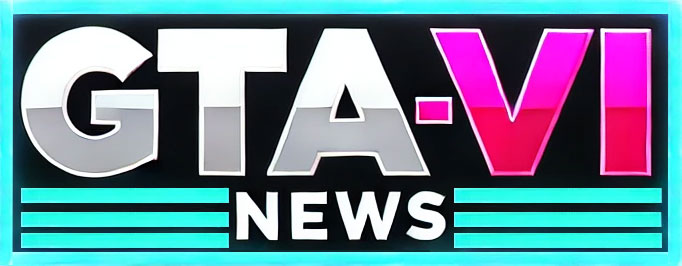Six Dynamic Systems That Could Make GTA 6 Truly Next-Gen

Grand Theft Auto VI is poised to define a generation. These six systems would push it there—without losing the fun.
Speculation around Rockstar Games is at full tilt. Fans expect scale, detail, and the studio’s signature mischief. However, the leap from great to unforgettable usually comes from systems that collide in surprising ways. Below are six dynamic features that could evolve GTA 6 while keeping it fast, funny, and wildly replayable.
For confirmed features so far, see our living roundup everything we know about GTA 6.
1) Dynamic Roadworks That Reroute the City
In past games, construction sites felt like props. Static. Predictable. In contrast, GTA 6 could spawn short-term roadworks on major arteries and side streets, forcing fresh routes and tense on-the-fly decisions during chases.
How it could work
Lightweight “events” trigger on eligible road segments: burst water mains, lane painting, utility trenching, crane lifts. Traffic AI reroutes; cops adapt. You arrive at an intersection and—surprise—hazard cones, a flagger, a narrowed lane. Plans change instantly.
Why it matters
Unscripted obstacles create stories. A blocked offramp turns a clean getaway into a risky detour through an unfamiliar neighborhood. Every pursuit feels new. Every commute, a little different. Beautiful chaos.
Exploring the map’s character districts? Our guide to the state of Leonida explains why regional variety would make these moments shine.
2) Fuel—But Fun, Not Fiddly
Do we really want cars stalling mid-heist? Not quite. A smarter model treats fuel like performance affinity rather than a hard fail state.
How it could work
Low fuel trims acceleration, top speed, and grip; full tanks add punch—but increase blast risk if the car explodes. EVs keep consistent stats; hybrids trade resilience for range. Premium fuel types offer short buffs for races or escapes.
Why it matters
Vehicles become extensions of the protagonist. You nurture your ride, stash gear in the trunk, and choose fuel like a perk. It’s friction that rewards planning—without killing momentum.
See how systems from Rockstar’s frontier informed modern design in what RDR2 can teach GTA 6.
3) Semi-Realistic Vegetation Fire
No, not full wildfire simulation. But localized scorch that lingers—charred grass, singed leaves, popped tires near heat—would make shootouts feel consequential.
How it could work
Fire spreads briefly along ground cover and shrubs, then cools to blackened decals and ash particles. Paths close. Visibility dips. You improvise—flanking through smoke while engines tick and hiss.
Why it matters
Small reactive details amplify the power fantasy—and the aftermath. You don’t just win a firefight; you leave a mark on the world.
4) Street Culture That Actually Lives
Citizens shouldn’t orbit the player; they should have plans of their own. Imagine rolling into a block party, family cookout, low-rider meet, or waterside salsa night—each with music, chatter, and mini-activities.
How it could work
Neighborhood “culture seeds” schedule events by district wealth, demographics, and time of week. You might grab a drink, join a dominoes table, or segue into a spontaneous street race.
Why it matters
It deepens place attachment. You start caring about corners of Leonida for more than loot or missions. You go because it feels like home—or, sometimes, enemy territory.
6) A Proportionate, Smarter Wanted System
Two stars shouldn’t equal instant overkill. Early levels should prioritize arrests and de-escalation; lethal force kicks in later—if you earn it.
How it could work
- Stars 1–2: Officers pursue, box-in, and attempt arrests. Tasers, spike strips, and PA warnings replace immediate gunfire.
- Star 3: Lethal force authorized; helicopter spotlight, canine units, limited drone support in industrial zones.
- Stars 4–6: Tactical teams, air support, armored units—difficult to reach, harder to escape. Surviving becomes a story worth telling.
Why it matters
Escapes become puzzles, not rituals. Search parties sweep tunnels and scrublands; stealth takedowns that avoid radio calls keep you hidden. Fairer, fiercer, better.
We chart the possibilities in how a next-gen wanted level could work.
The Bottom Line
None of these systems require dull micromanagement. They add friction where it’s fun and story where it’s unexpected. Moreover, they complement the series’ strengths: satire, speed, and spectacle.
If GTA 6 weaves them together, the city won’t just look alive—it will behave alive. Fresh routes. Smarter cops. Real neighborhood vibes. A feed that won’t shut up about your latest mess.
This changes everything.

5) A Reactive, Laugh-Out-Loud Social Media Layer
Modern life runs on feeds. GTA VI should parody that reality—and use it for gameplay.
How it could work
In-game apps and sites comment on your heists, near-misses, and wardrobe disasters. Stores promote flash sales; agencies post road closures; locals hype pop-up parties. Your choices nudge a personal “reputation graph” that unlocks cameos, discounts, or spicy call-outs.
Why it matters
It makes your actions feel witnessed. And it ties the city’s moving parts together—news, commerce, culture—into one wonderfully ridiculous mirror of our timelines.
For satire and feed mechanics teased so far, dive into GTA 6’s in-game internet and social parody.